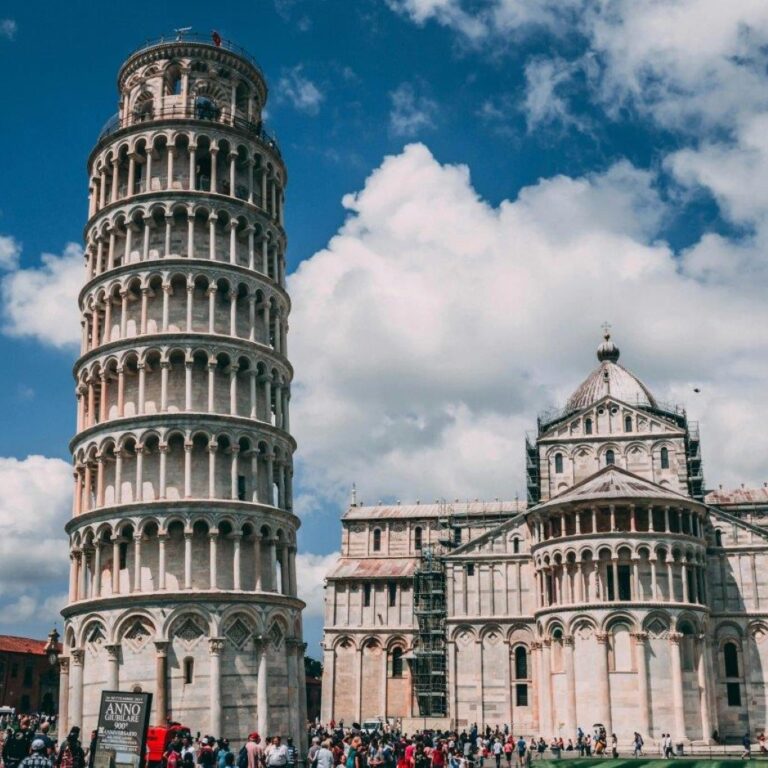The Leaning Tower of Pisa is located in the city of Pisa, in the Tuscany region of Italy, and is the freestanding bell tower of the cathedral of the city.
Construction of the tower began in 1173 and was completed in 1372, taking nearly 200 years due to wars and economic troubles.
The tower started to lean during its construction due to an unstable foundation and soft ground, which could not properly support the structure's weight.
The tower is 56 meters (183 feet) tall on the high side and 55.86 meters (183 feet) tall on the low side, with an incline of approximately 3.97 degrees.
The Leaning Tower of Pisa has eight stories, including the chamber for the seven bells, each representing a musical note.
The tower's design is attributed to Bonanno Pisano, although there is some debate about the true identity of the architect.
Galileo Galilei, the famous scientist, is said to have conducted experiments on gravity by dropping objects of different masses from the tower.
The Leaning Tower of Pisa is part of the Piazza dei Miracoli, a UNESCO World Heritage Site that also includes the Pisa Cathedral, the Baptistery, and the Camposanto Monumentale.
The tower was closed to the public in 1990 due to safety concerns and underwent extensive stabilization work, which reduced the tilt by 45 centimeters (17.7 inches). It reopened in 2001.
The tower's lean has stabilized, and engineers believe it will remain safe for at least another 200 years.
The Leaning Tower of Pisa weighs approximately 14,500 tons and is constructed of white and gray marble.
The tower's foundation is only about three meters deep, contributing to its instability and iconic tilt.
The Leaning Tower of Pisa attracts over one million tourists each year, making it one of the most popular attractions in Italy.
Climbing the tower involves ascending 294 steps, which provide visitors with panoramic views of the city of Pisa and its surroundings.
The tower has inspired various artworks, photographs, and even humorous tourist photos where people pretend to hold up or push over the leaning structure.


